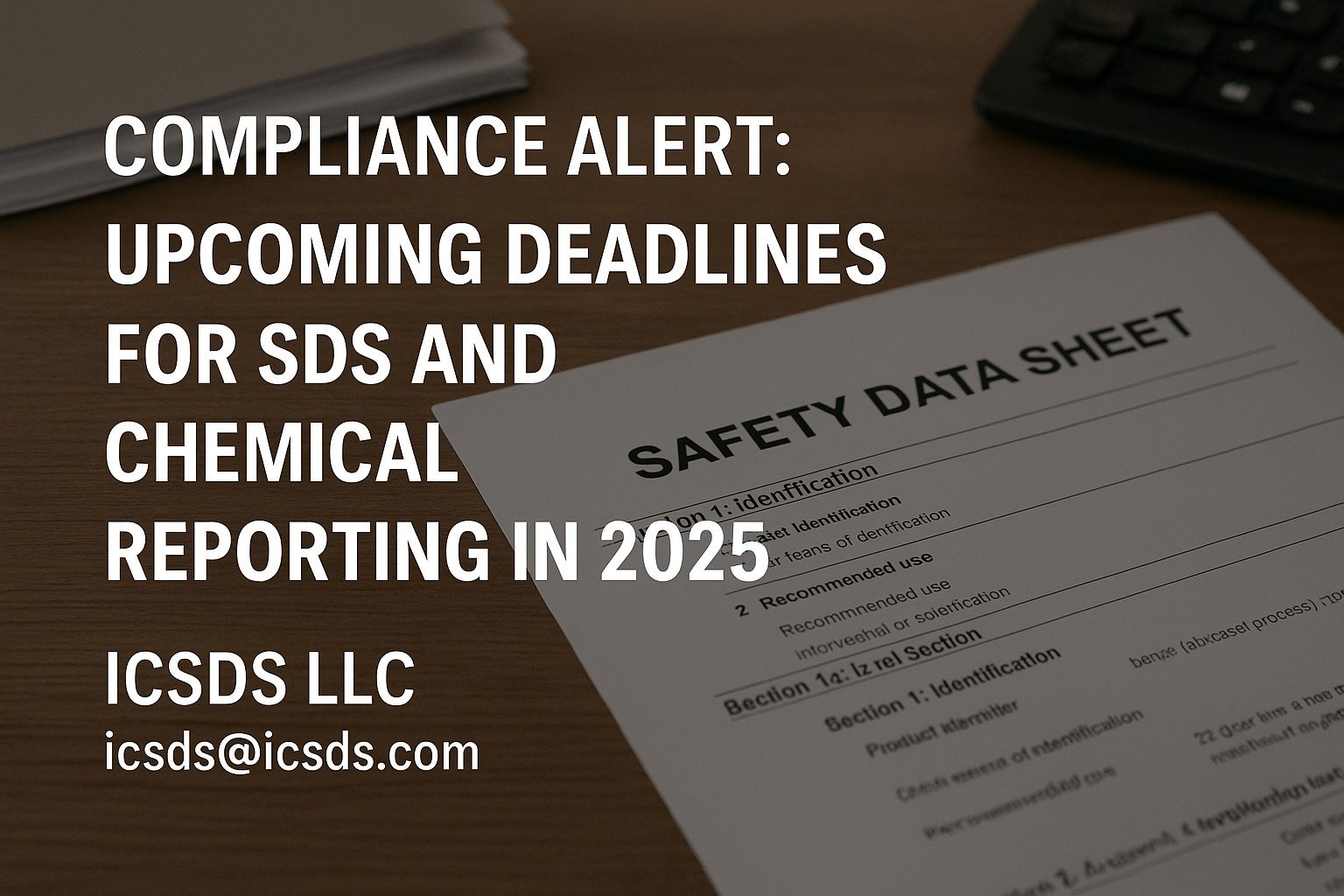Compliance Alert: Upcoming Deadlines for SDS and Chemical Reporting in 2025
Stay updated with the latest OSHA and EPA regulations impacting SDS and MSDS authoring in 2025. Learn how ICSDS can help you stay compliant with deadlines and chemical safety standards. Introduction In the rapidly evolving world of chemical safety, staying on top of new regulations is critical for manufacturers, importers, and SDS authors alike. With new rules rolling out from OSHA and the EPA, 2025 is shaping up to be a pivotal year for SDS and MSDS compliance. This post highlights upcoming changes, key deadlines, and how ICSDS can help streamline your compliance efforts. OSHA’s HazCom Update: What You Must Know Effective July 19, 2024, OSHA has revised the Hazard Communication Standard (HazCom) to align with the 7th revision of the Globally Harmonized System (GHS). These changes directly impact how Safety Data Sheets (SDS) and Material Safety Data Sheets (MSDS) are authored and maintained. Key updates include: SDS authors and chemical manufacturers must now ensure that all SDS documents meet these new formatting and labeling requirements. EPA’s TSCA Section 8(d) Rule: Critical Reporting Deadlines The Environmental Protection Agency (EPA) has finalized a rule under TSCA Section 8(d) requiring chemical manufacturers and importers to report unpublished health and safety studies for 16 key chemicals. Affected substances include: These reports are critical for chemical risk evaluations and must include relevant SDS/MSDS documentation. Key Dates to Remember in 2025 Businesses that fail to comply risk fines, audits, and operational disruptions. How This Impacts SDS/MSDS Authoring These new regulatory demands mean that SDS authors, MSDS authoring services, and in-house compliance teams must: The changes represent both a challenge and an opportunity to enhance your chemical safety documentation. Why Partner with ICSDS for SDS Compliance At ICSDS, we specialize in helping businesses across the U.S. and Canada meet SDS and MSDS regulatory requirements. Whether you’re looking to revise existing Safety Data Sheets or create new ones that comply with OSHA’s updated HazCom standard and EPA rules, our team of expert SDS authors is here to help. We offer: ICSDS is your trusted partner for safe, reliable, and regulation-ready chemical documentation. Final Thoughts With significant OSHA and EPA deadlines approaching, now is the time to act. Don’t let outdated SDS or MSDS documents put your business at risk. Trust ICSDS to keep your compliance strategy current, effective, and audit-ready. Need help updating your SDS/MSDS? 👉 Contact ICSDS Today and ensure you’re ready for 2025’s chemical safety challenges.

